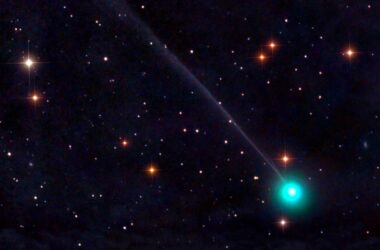Comets may offer a feasible means of transporting crucial life-building elements to planets with neighboring celestial bodies. These cosmic wanderers have the capacity to carry essential components for life, such as amino acids and organic compounds; however, the successful delivery of these materials to a planet depends on its overall system arrangement.
Several hypotheses exist regarding the origins of life-sustaining ingredients on Earth, with one popular theory proposing that comets collided with our planet, depositing organic molecules. Nevertheless, comets typically traverse space at extremely high speeds. When they collide with a planet at speeds exceeding 20 kilometers per second, the likelihood of these vital compounds surviving the impact is minimal.
Richard Anslow and his team from the University of Cambridge conducted simulations to explore how planetary systems could decelerate comets, thereby reducing impact speeds to levels conducive to the preservation of these compounds. Under optimal conditions, a slower collision could result in the formation of a prebiotic soup known as a comet pond within the impact crater.
The researchers discovered that two types of systems are capable of reducing comet speeds by 5 to 10 kilometers per second: those orbiting relatively massive stars, where orbits tend to be slower, and those with closely spaced planets, enabling comets to navigate between them and gradually lose speed.
According to Anslow, the most favorable planetary system for this purpose would be a low-mass planet akin to Earth orbiting a high-mass star, perhaps even higher in mass, within a system featuring neighboring rocky planets capable of diverting comets. He suggests that if signs of life are eventually detected on other planets, analyzing the system’s arrangement could provide insights into the origins of life, thus enhancing our understanding of life’s formation on Earth.








